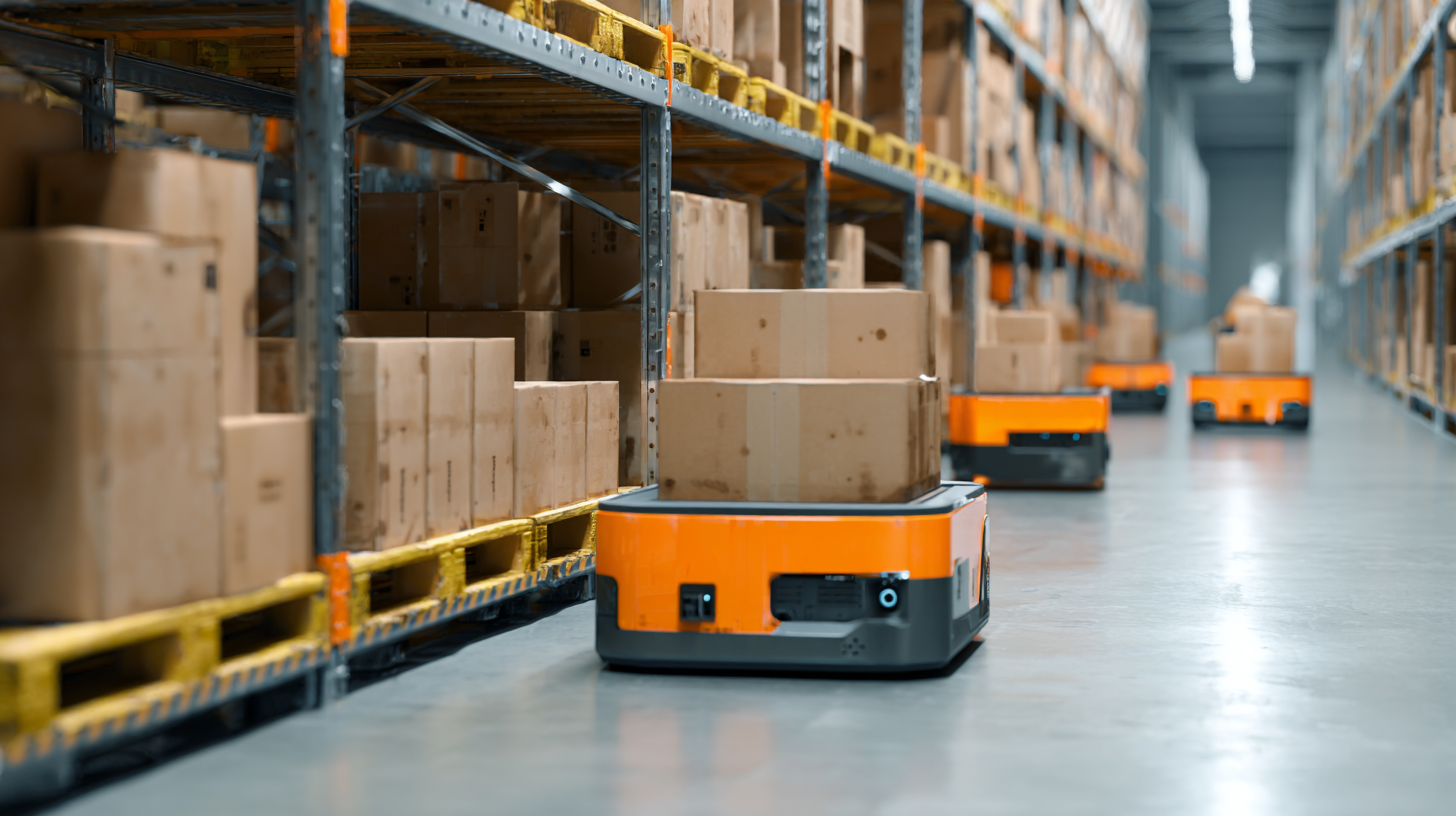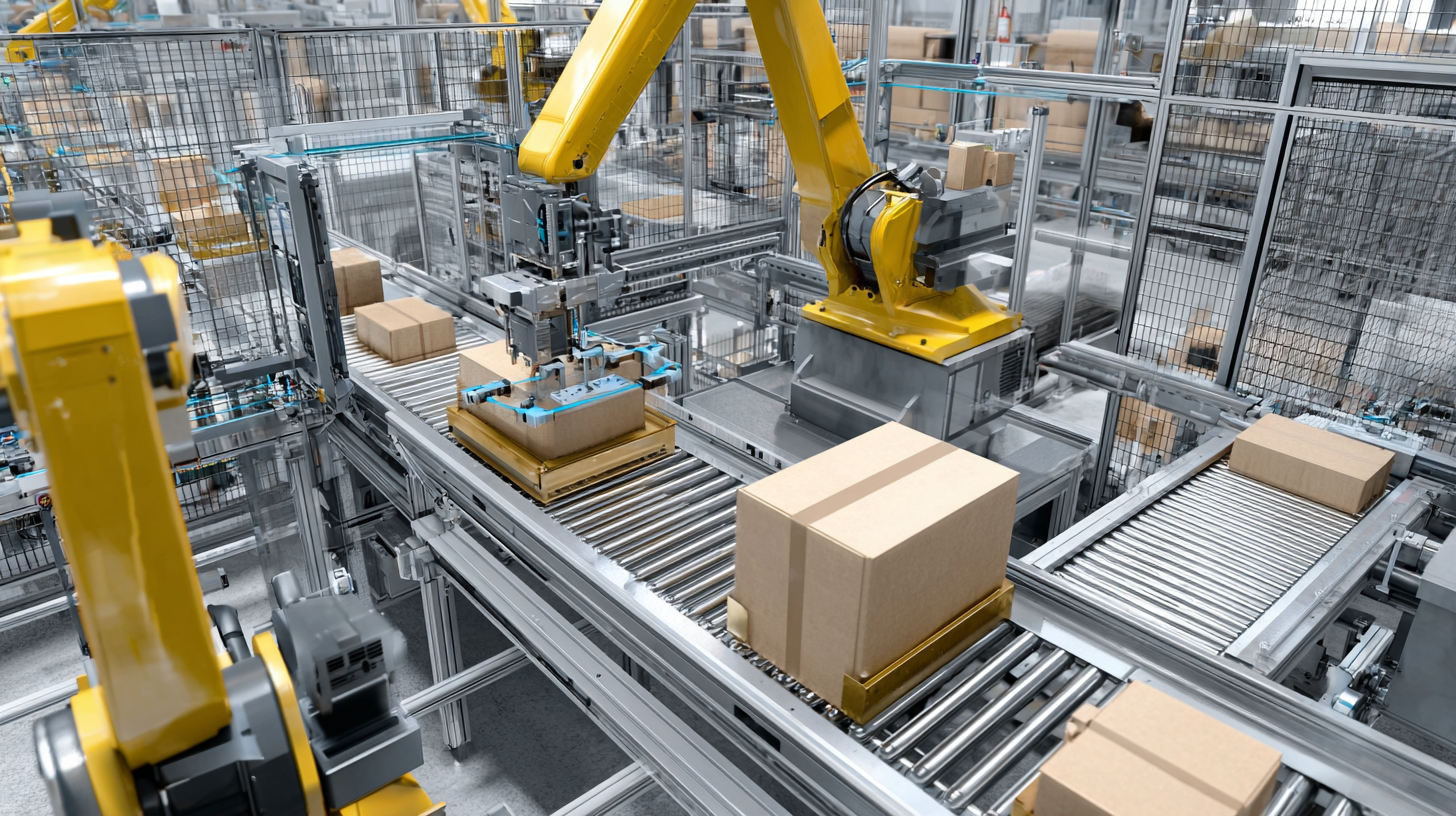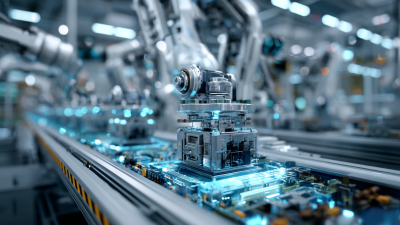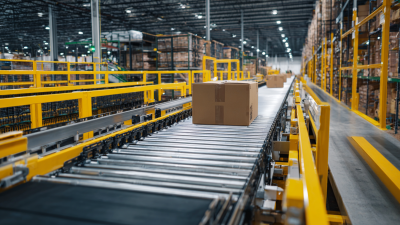In today’s fiercely competitive manufacturing landscape, companies are turning towards packaging automation solutions to enhance operational efficiency and streamline processes. According to a report by McKinsey, manufacturers that implement automation technologies can increase productivity by up to 30%, significantly impacting their bottom lines. Additionally, a study by the Packaging Automation Association indicates that nearly 70% of manufacturers expect to invest in packaging automation within the next two years, highlighting a clear shift towards automated solutions in the industry. These advancements not only reduce labor costs but also improve precision and speed, ultimately leading to higher-quality products and enhanced customer satisfaction. As the demand for faster and more efficient production intensifies, the role of packaging automation solutions is becoming increasingly vital in the modern manufacturing ecosystem.

Packaging automation is reshaping the landscape of modern manufacturing, providing a pathway to
enhanced efficiency and reduced operational costs.
According to a report by Grand View Research, the global packaging automation market is expected to reach
$93.75 billion by 2027, growing at a compound annual growth
rate (CAGR) of 20.5% from 2020. This surge reflects a growing recognition among manufacturers
of the need to streamline operations and improve throughput. Through automated solutions, manufacturers can
reduce labor costs, minimize waste, and improve consistency in product quality.
Understanding the fundamentals of packaging automation involves recognizing its core components:
automated machines, robotic systems, and advanced software solutions that oversee packaging processes.
For instance, a study by the Packaging Machinery Manufacturers Institute (PMMI) highlights that companies
utilizing automation report up to a 30% increase in productivity while concurrently decreasing
packaging errors by nearly 50%. As businesses increasingly adopt these technologies, they
create more agile production lines capable of swiftly adapting to changing market demands and consumer
preferences, ultimately fostering a competitive edge in
the global marketplace.

The implementation of packaging automation solutions has become a game changer in the modern manufacturing landscape. One of the key benefits is the significant increase in production efficiency. According to a recent report by Smithers Pira, automated packaging machinery can lead to up to a 20% reduction in labor costs and a 30% improvement in throughput. These efficiencies allow companies to scale production rapidly, adapt to changing market demands, and ultimately enhance their competitive advantage.
Furthermore, packaging automation contributes to improved accuracy and consistency, minimizing human error in the packaging process. A study by the Packaging Machinery Manufacturers Institute found that 95% of companies experienced a decrease in packaging defects after adopting automated solutions. This consistency not only improves product quality but also enhances customer satisfaction by ensuring that products arrive intact and correctly packaged.
**Tips:**
1. When selecting packaging automation solutions, consider scalability to accommodate future production needs.
2. Regularly train staff on new technologies to maximize the benefits of automation, ensuring everyone is comfortable and proficient with the equipment.
3. Assess your current packaging processes to identify areas where automation could provide the greatest impact, both in efficiency and cost savings.
| Benefit | Description | Impact on Production (%) | Cost Savings ($) |
|---|---|---|---|
| Increased Speed | Automating packaging processes reduces cycle time. | 30% | $25,000 |
| Improved Accuracy | Reduces human error in packaging operations. | 20% | $15,000 |
| Resource Optimization | Maximizes use of materials and minimizes waste. | 25% | $10,000 |
| Enhanced Safety | Reduces workplace injuries through automation. | 35% | $5,000 |
The landscape of modern manufacturing is undergoing a significant transformation thanks to advancements in packaging automation technologies. With the global packaging automation market projected to reach $100 billion by 2025, manufacturers are increasingly adopting automated solutions to enhance productivity and reduce operational costs. Various types of technologies are leading this revolution, including robotic packaging systems, automated sealing, and labeling machines. These tools not only streamline processes but also ensure higher precision and consistency in packaging, which is essential for maintaining product integrity and customer satisfaction.
One of the most impactful types of packaging automation technology is the use of robotic arms. According to a report by Research Nester, robotic packaging solutions can reduce packaging cycle times by up to 30%. Additionally, automated labeling machines have become indispensable, capable of adding labels at speeds of up to 200 products per minute. This efficiency is crucial in industries like food and beverage, where compliance with regulatory standards is paramount.
Tips: Consider investing in a mixed-automation approach that combines both robotic and traditional methods to maximize flexibility. Regular training sessions for staff on new technologies can significantly reduce operational disruptions during transitions. Finally, always stay updated on the latest technology trends to ensure your facility remains competitive in an evolving market.
Successfully integrating automation into existing production lines requires careful planning and execution. First, a thorough assessment of the current workflow is essential. This involves identifying bottlenecks and areas that can benefit from automation. Engaging with employees who work on the production line can provide valuable insights into day-to-day challenges and opportunities for efficiency improvements. Conducting this analysis will help in selecting the right automation solutions tailored to specific manufacturing needs.

Once the analysis is complete, the next step involves choosing the appropriate technology and equipment. This may include robotic arms for handling products, automated packaging systems, or software for real-time monitoring. It’s important to ensure that any new technology is compatible with existing systems to avoid disruptions. Training staff is another critical component, as workers need to be comfortable with new technology. Providing adequate training sessions and ongoing support will facilitate a smoother transition, leading to enhanced productivity and a more efficient manufacturing process overall.
The integration of packaging automation solutions in modern manufacturing has led to significant efficiency gains, measurable through various key performance indicators (KPIs). For instance, a report by Smithers Pira highlights that automated packaging processes can reduce labor costs by up to 30%, while increasing throughput by as much as 50%. This improvement is largely attributed to the elimination of manual errors and the streamlining of workflows, allowing manufacturers to meet rising consumer demands without compromising quality.
Moreover, companies implementing packaging automation have reported significant improvements in production speed and accuracy. According to a survey conducted by PMMI, over 70% of manufacturers observed enhanced speed post-automation, with average cycle times decreasing by approximately 25%. Metrics such as Overall Equipment Effectiveness (OEE) are crucial in evaluating these impacts, as they consider factors like availability, performance, and quality to provide a comprehensive picture of operational efficiency. By closely monitoring these metrics, businesses can identify bottlenecks, optimize processes, and ultimately drive higher profitability in a competitive market.






